RETAIL INTELLIGENCE 360 is a package of predefined analytical modules across three dimensions—Store Intelligence, Market
Intelligence and Customer Intelligence—to give you a 360° view of your business and operating landscape.

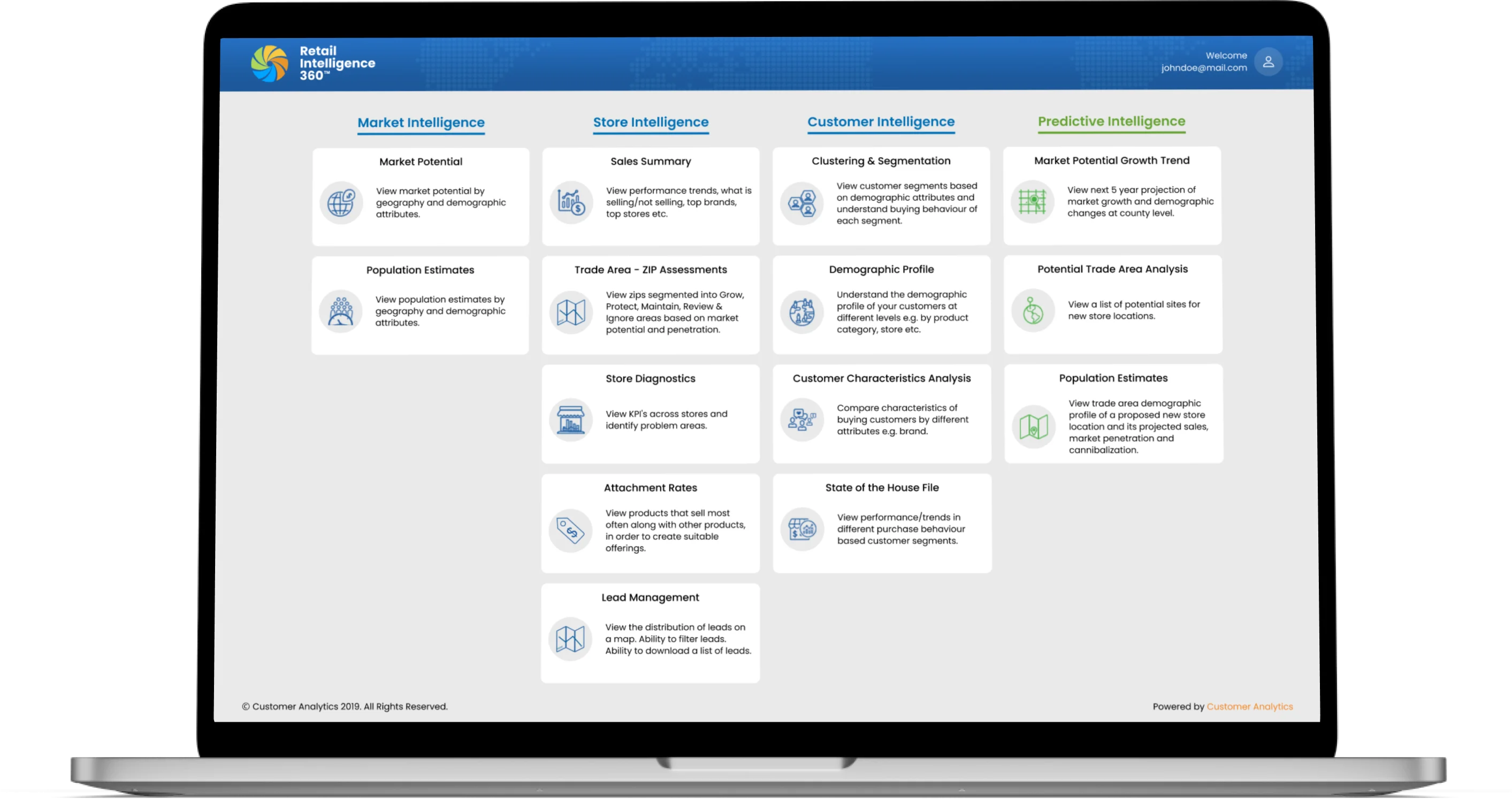
While the RETAIL INTELLIGENCE 360 package provides the core analytics required by a retail business, it can easily be customized to meet the specific need of your business.


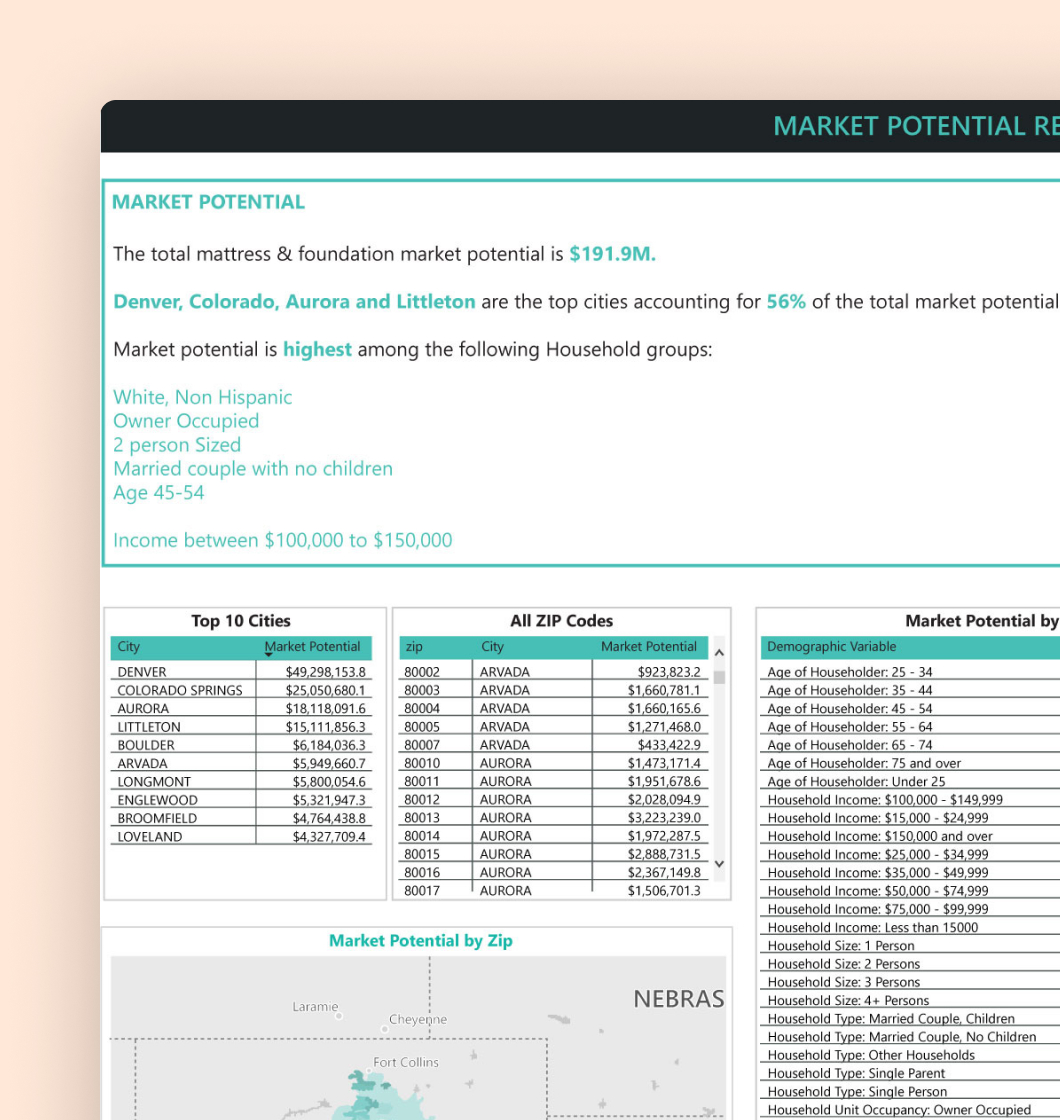 Market Potential
Market Potential
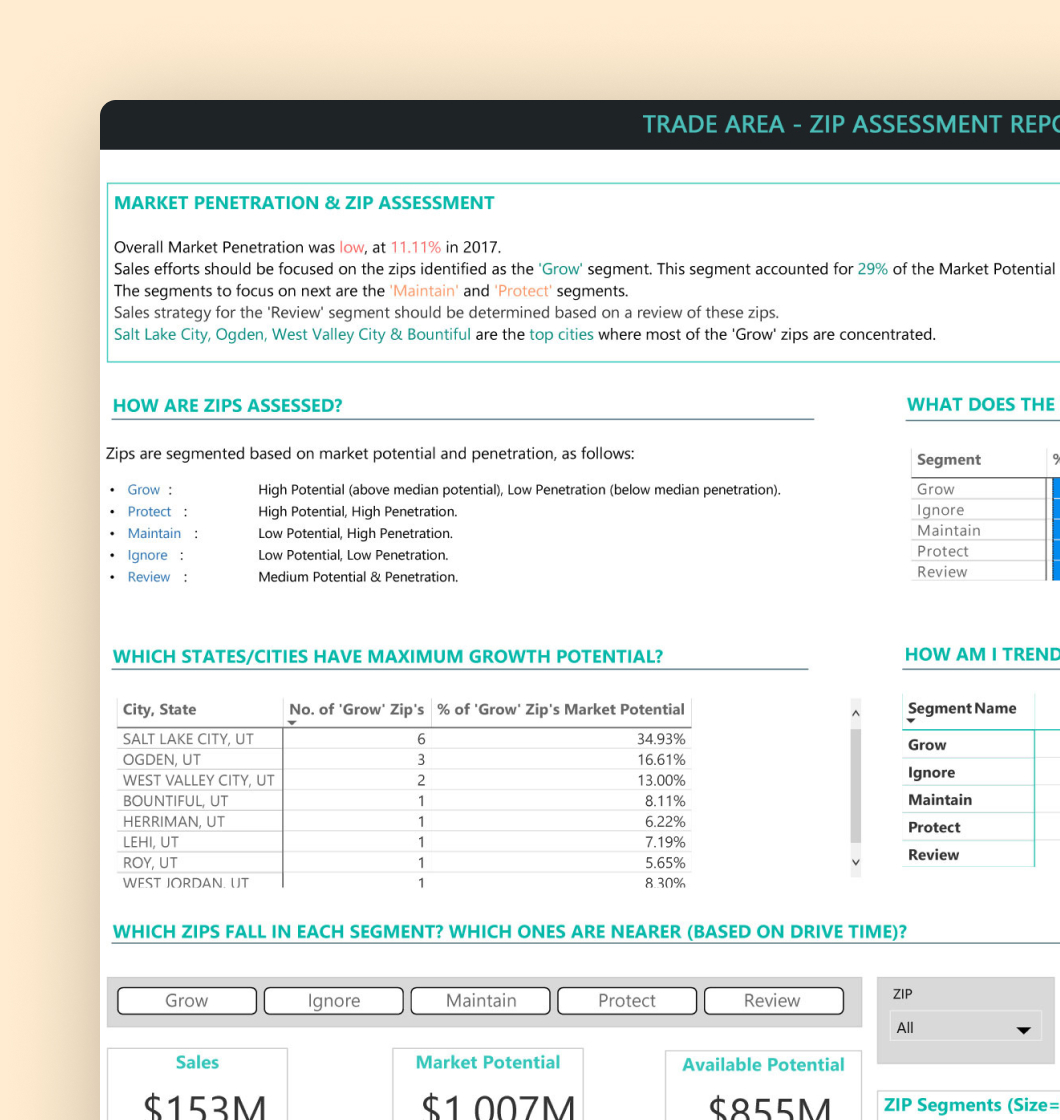 Trade Area Zip Assessment
Trade Area Zip Assessment
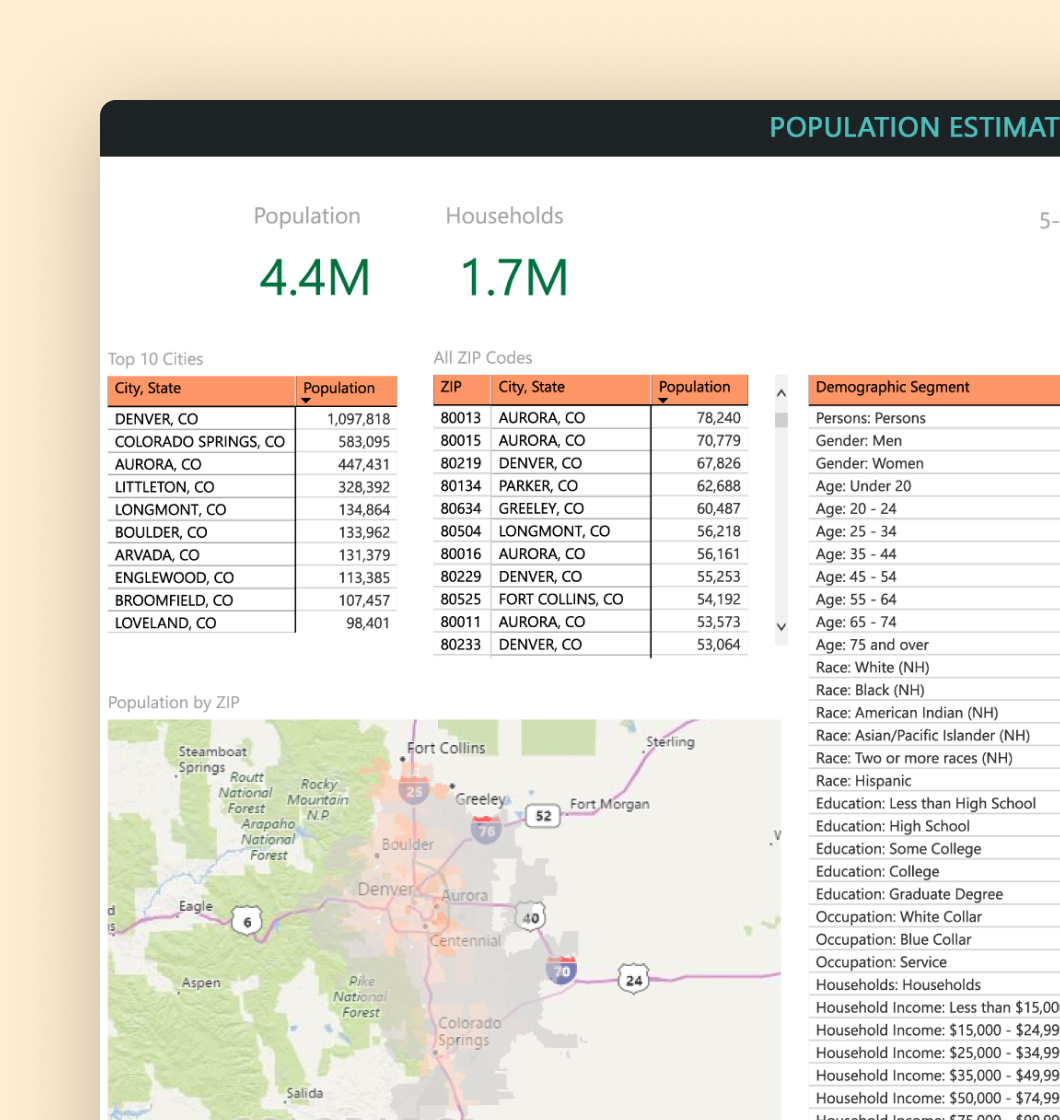 Population Estimates
Population Estimates

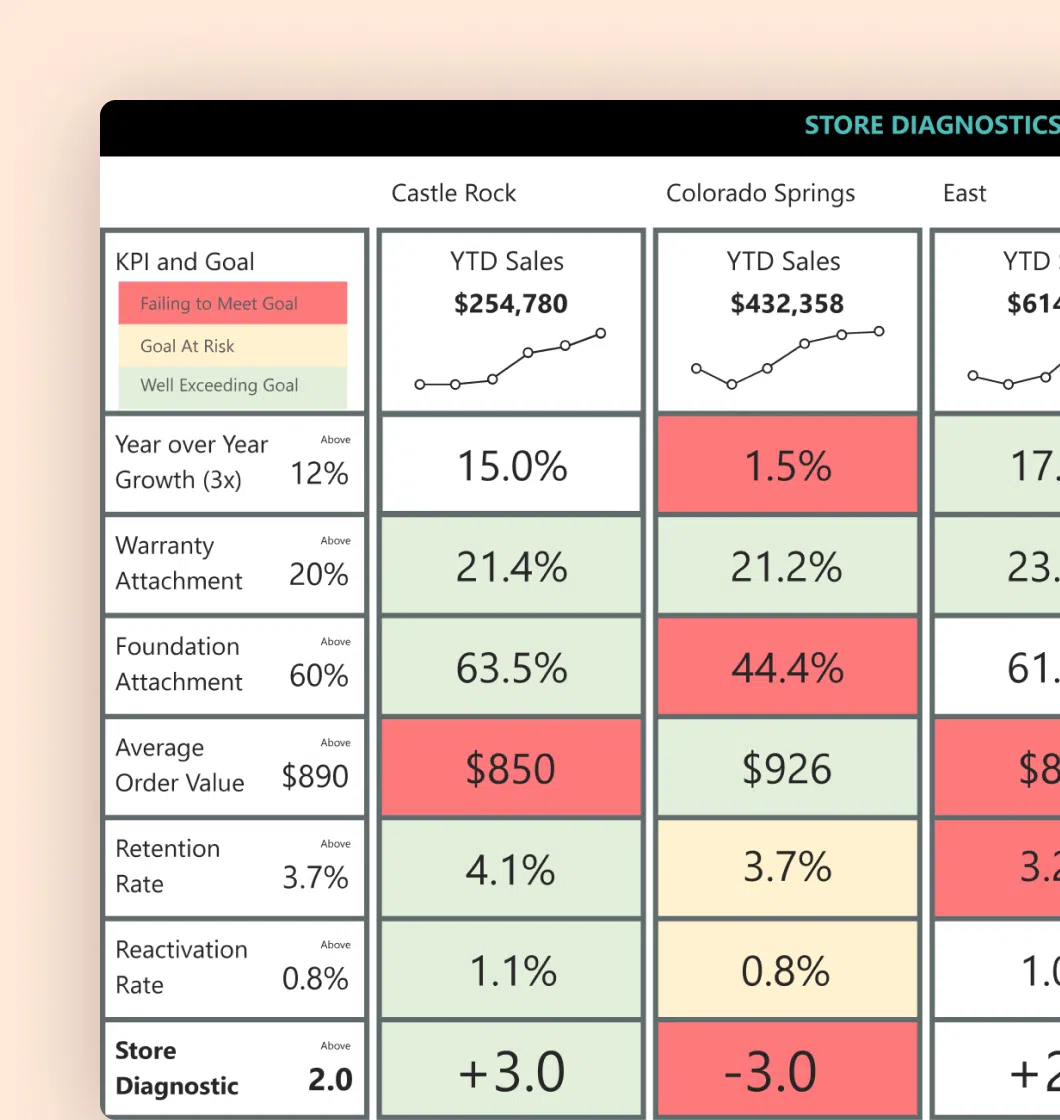 Store Diagnostics
Store Diagnostics
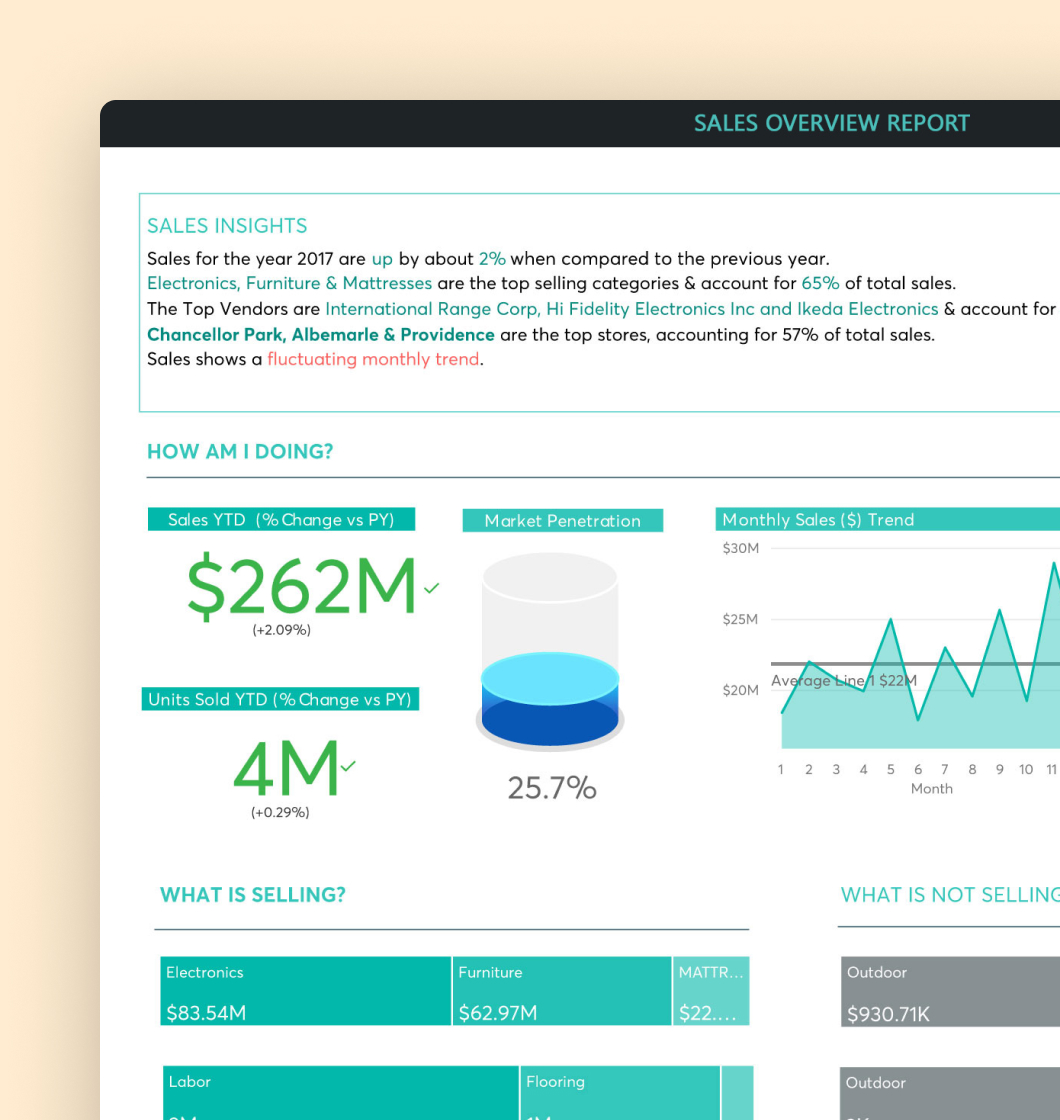 Sales Overview
Sales Overview
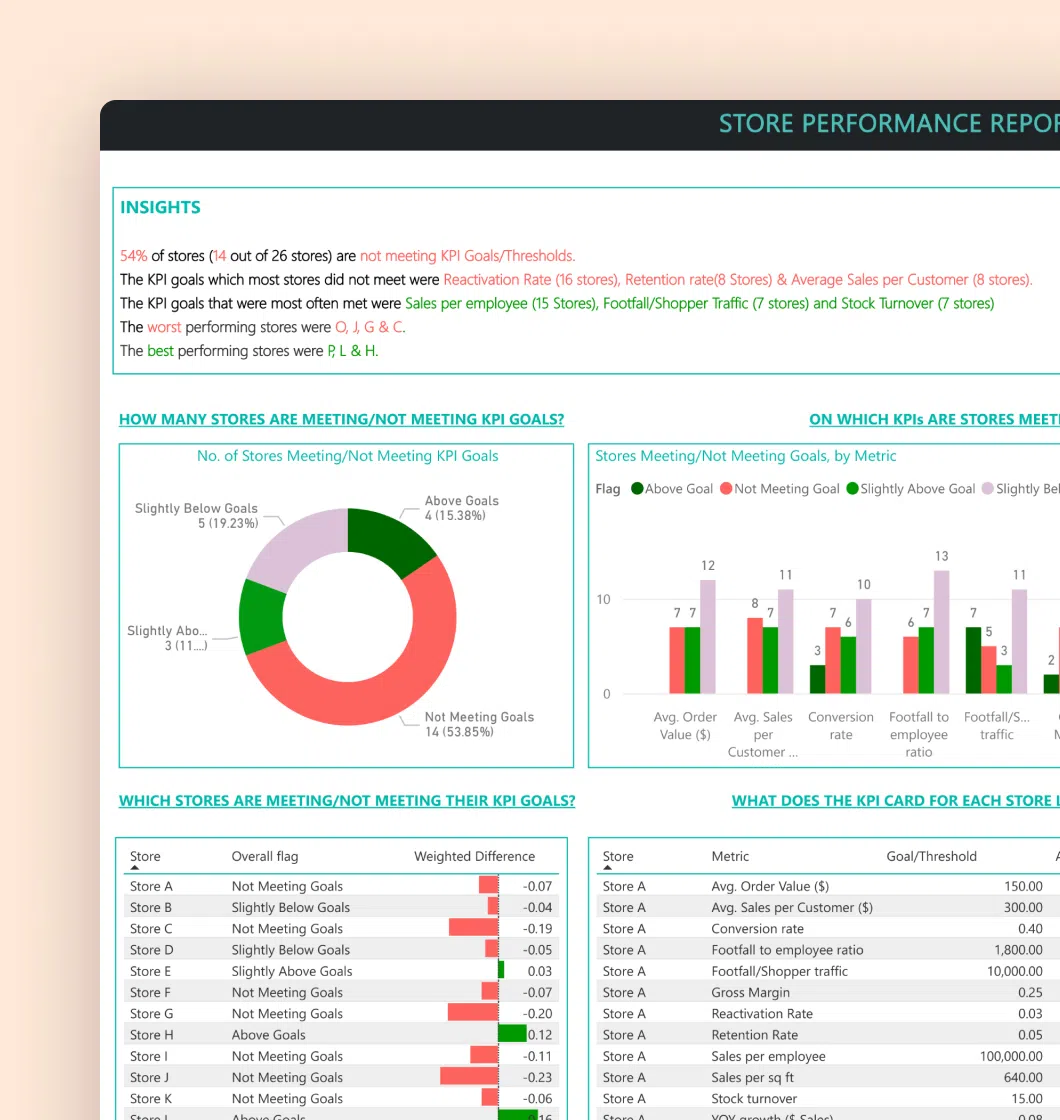 Store Performance Report
Store Performance Report
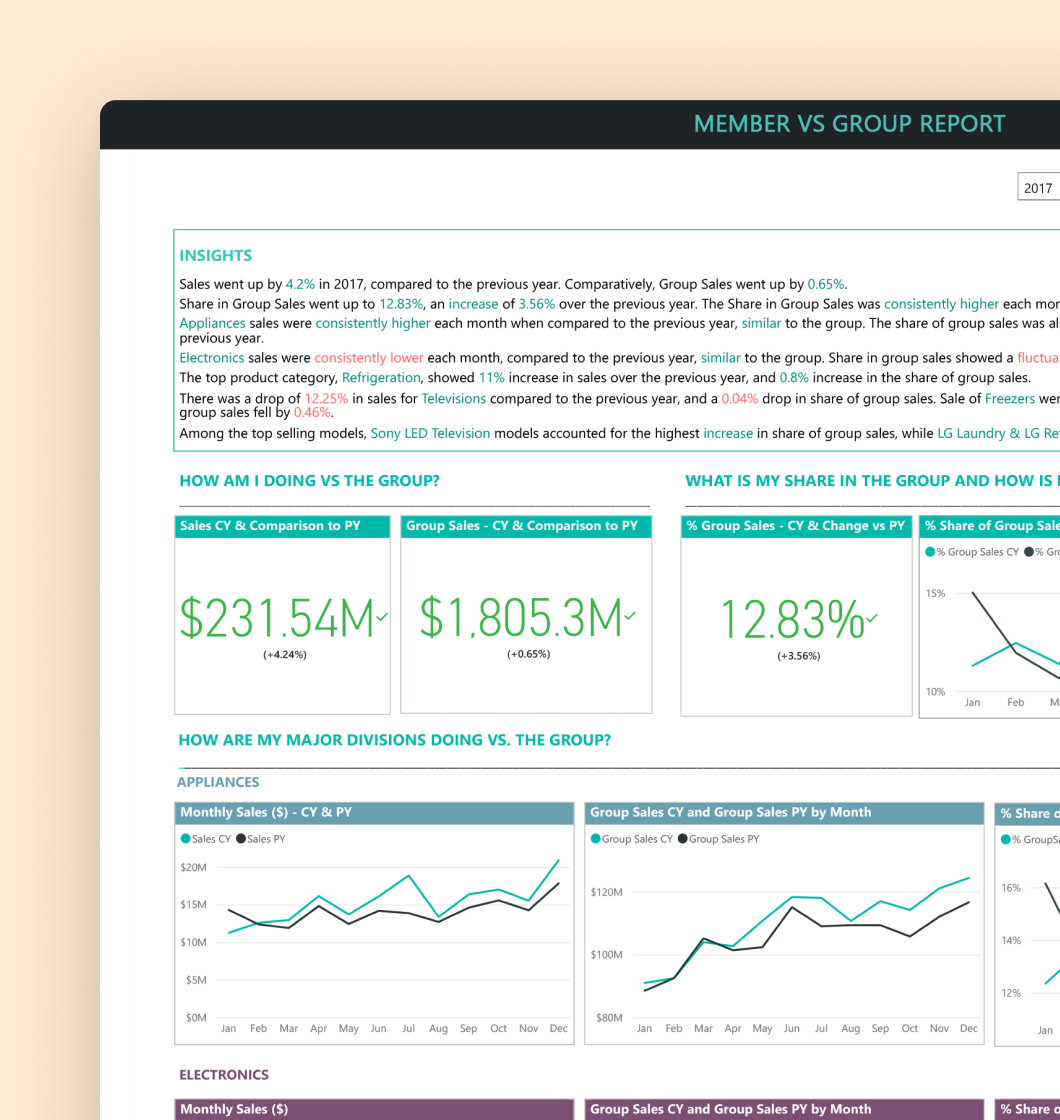 Member vs Group Report
Member vs Group Report

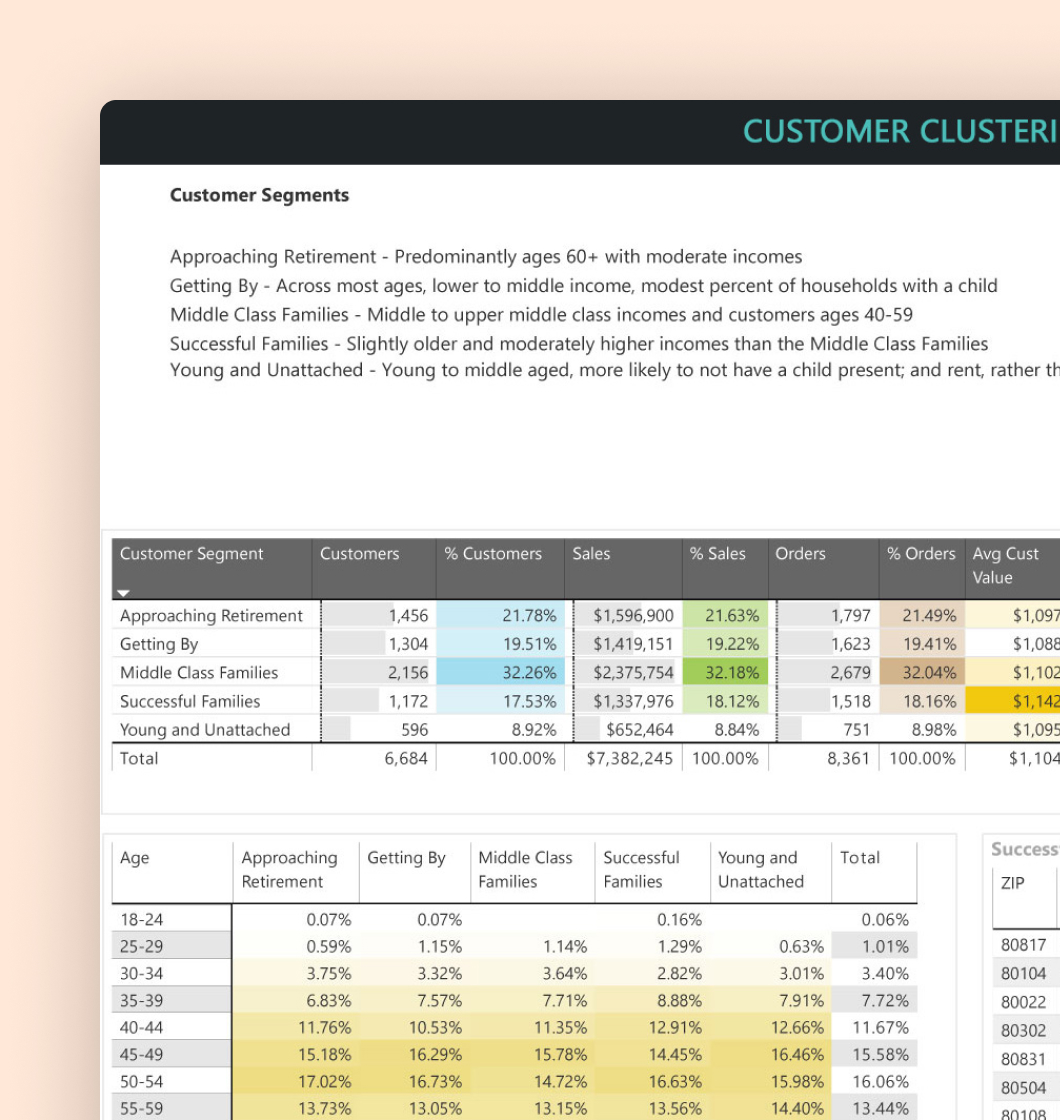 Customer Clustering & Segmentation
Customer Clustering & Segmentation
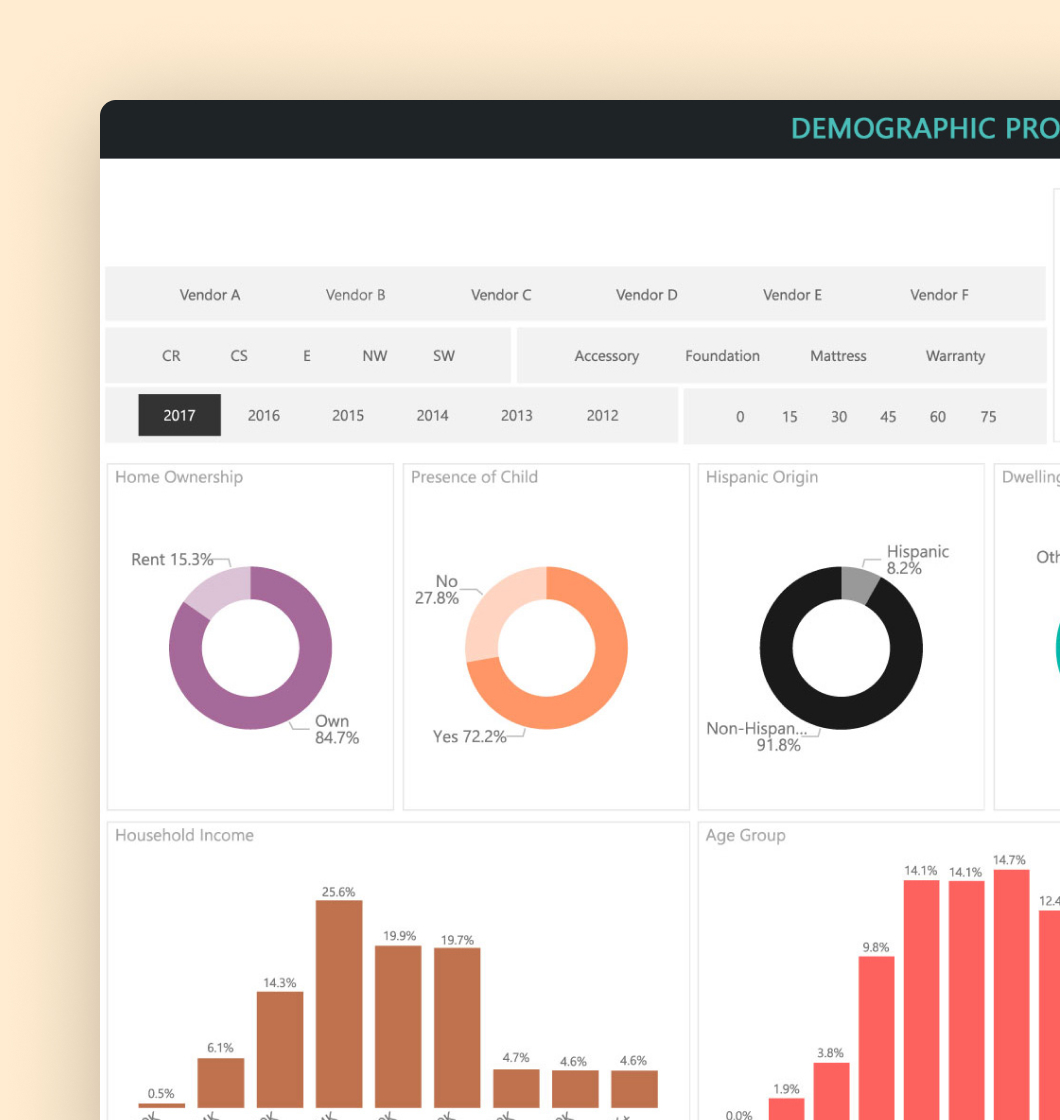 Demographic Profile
Demographic Profile
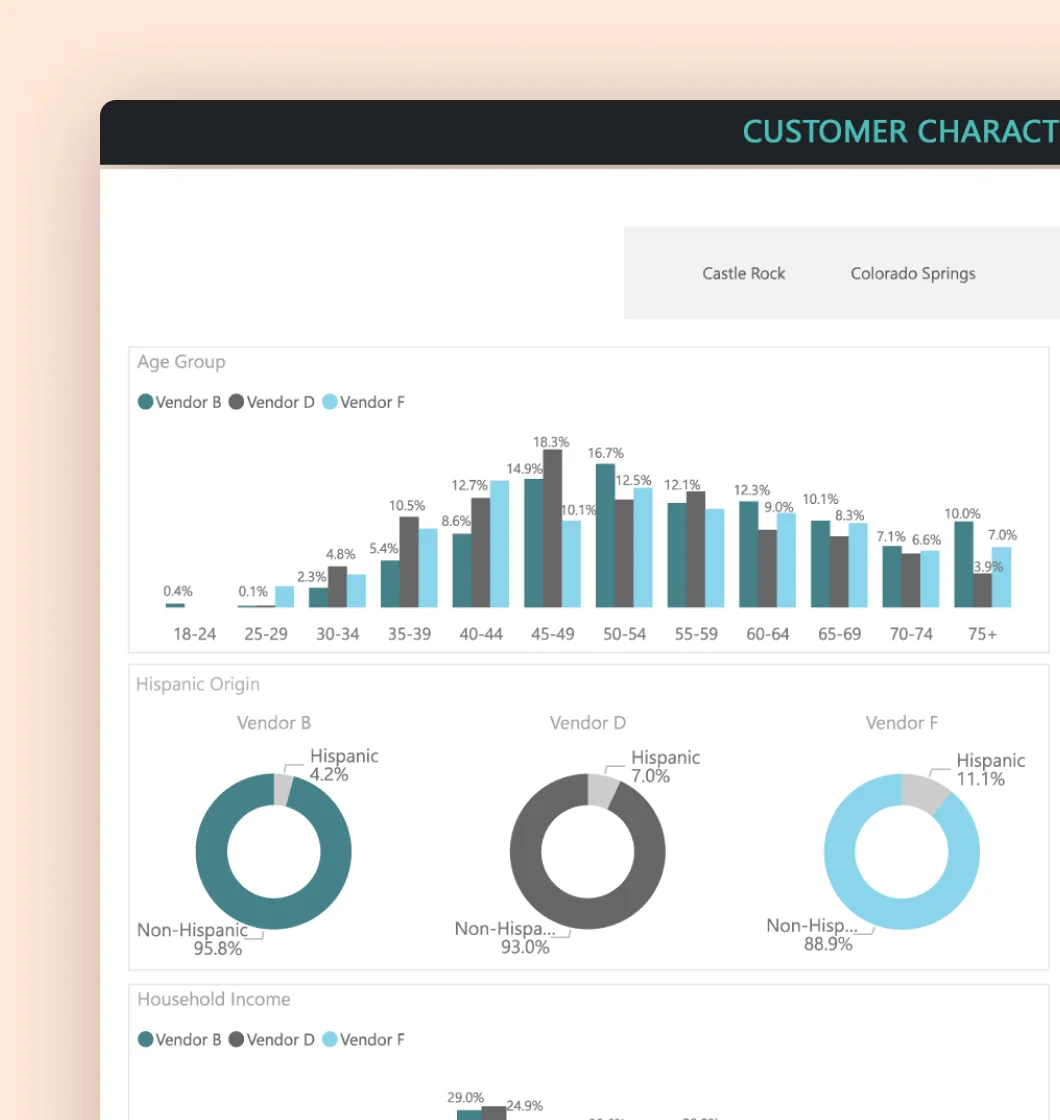 Customer Characteristics Analysis
Customer Characteristics Analysis
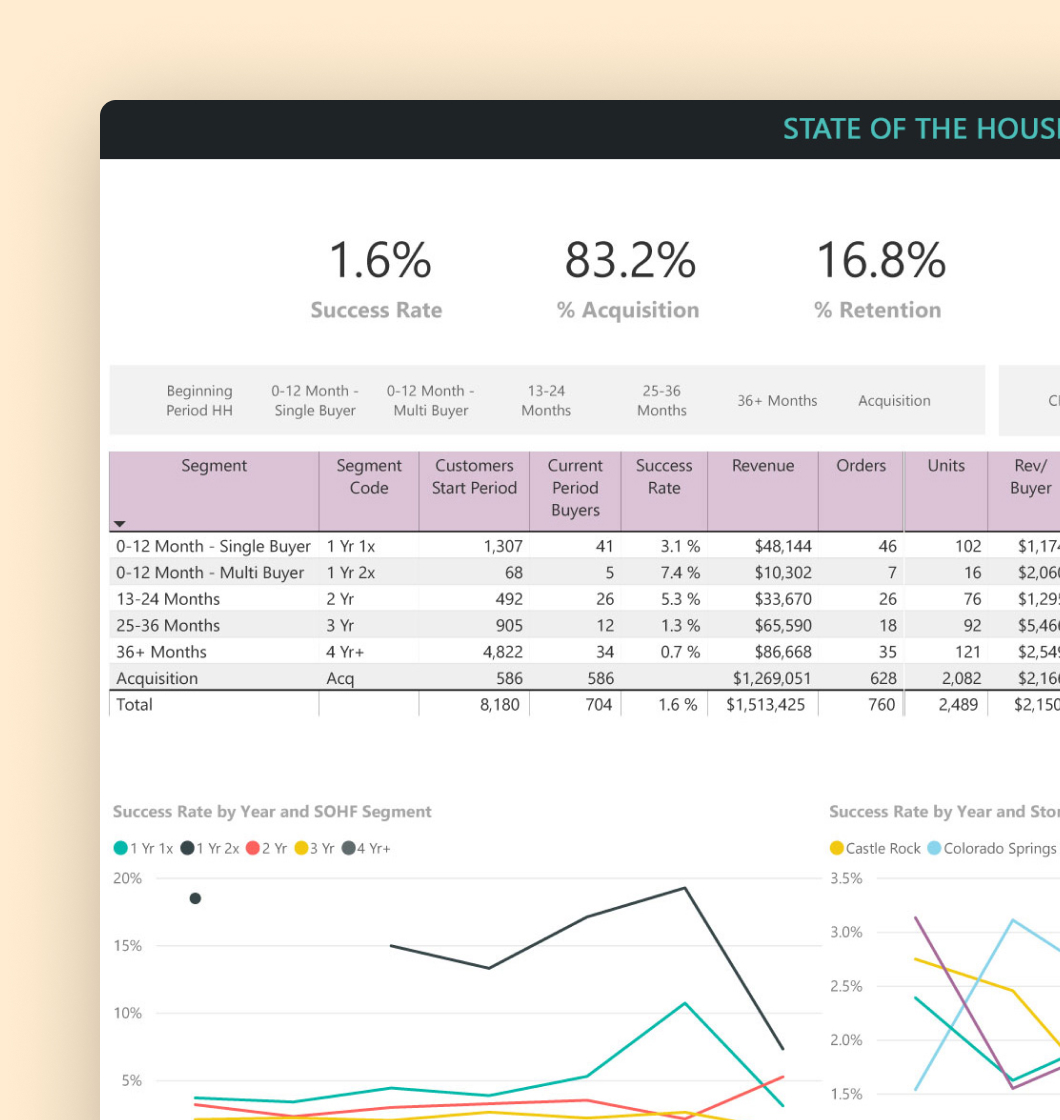 State Of The House File
State Of The House File

With Retail Intelligence 360, it’s easy to get started. You can get insights simply by sharing your locations and products of interest – we do the rest!
As you share more data you can get an even deeper and personalized view into your market, customers, and stores as outlined below.


Market potential by small area geography and demographics for better targeting.

Geographic area customers are coming from, business potential of that area to optimize marketing efforts.
Competitor locations in the trade area
Evaluation of potential store locations based on market potential, competition etc.

What is selling/not selling, where it is selling, not selling, sales trends etc.
Given a base product purchased, what percent of the time is a specific item purchased along with it ?
Which combinations of two products purchased on the same order occur more frequently than random, to create ‘market baskets’ or bundled product offers
Which combinations of two products purchased by the same customer in a given time period occur more frequently than random, i.e., product associations

Geographic area its customers are coming from and business potential, to optimize marketing efforts.
Growth areas (zips) where sales efforts should be concentrated.
Opportunities for consolidation through assessment of the impact of closing one or more stores.
How stores are doing on pre-defined metrics, and problem areas in each store.
Optimal product assortment on the shop floor to maximize sales.

Segments of customers, to get a better understanding of the customer base and purchase behavior.
Demographic profile of customers to understand, in turn, buying motives and behaviors and formulate sales/marketing strategies.
Comparison of customer demographics at different levels to understand who buys what/how/where etc. - for example profile of those buying online vs instore, Brand X vs Brand Y etc.

Comparison of store performance vs KPIs., Overview of how far stores are meeting goals overall and which stores need improvement, in which areas.

Sequence Analysis helps understand customer browsing behavior by looking at popular entry points into the portal and navigation paths of customers.

Impact of campaigns on sales and their ROI

Analysis of customer feedback on products/services to identify what is working well/not working well and trends over time

Supplier profile and performance, who are the best suppliers for a particular product, or for urgent requests etc.

Assessment of the efficiency and quality of operators on the manufacturing shop floor and identification of ‘masters' vs ‘learners’. Measure performance, check attrition, reward top performers and identify those in need of training to get better efficiency and quality
In a manufacturing environment, determine the optimal size of a production run to minimize costs

Better demand planning and inventory management to minimize lost sales due to shortage of inventory and inventory holding costs